The Saca de las Yeguas has remained unchanged for over 500 years. It is one of Andalusia's oldest and least known traditions.
Watching and living the experience first hand, it’s hard to believe that you are, in fact, in Europe and it is 2015. The feeling more resembles that of the Wild West at the turn of the century.
In terms of festivals, they don’t come much more authentic than the Saca de las Yeguas.
What is the Saca de las Yeguas?
In a nutshell, every year on the 26th of June, local horsemen known as Yegüerizos make their way into the swamps and marshes of the Doñana National Park and round up hundreds of semi-wild horses. The animals are rounded up and brought back to the village of El Rocio and eventually onto Almonte, where they are then cleaned, re-shoed, and put up for sale. Those which aren’t sold are later released back into the wild again.
The celebrations take place over a span of 3 days and precede the festivities to celebrate the local patron saint, San Pedro.
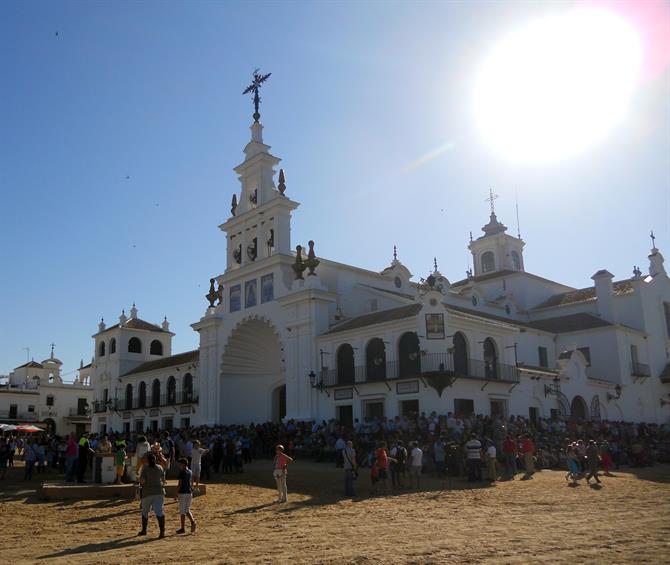
A long day
In the early morning hours of the first day, the main square of the Aldea del Rocio is completely deserted and quiet. There’s not a sound to be heard. A light breeze picks up some of the omnipresent dust and blows it in circles around the empty square. There is nothing present to portray the chaos that’s about to hit the very same square just a few hours later. Specifically, the thousands of pounding hooves and shouts from the cowboys. Rocio has yet to come alive.
Just before nine o’clock, an elderly man wearing a large straw hat to protect against the relentless Andalusian sun, enters the plaza. He’s carrying a folded beach chair under one arm and a vara in the other, a thin wooden stick that is used by farmers in the area to keep animals at bay.
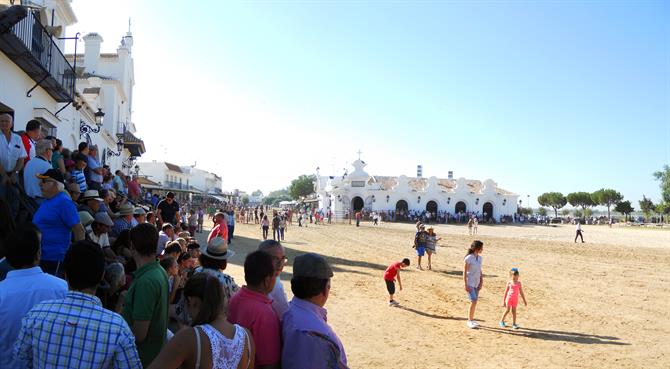
Looking completely non-plused, he sits himself near the edge of the main square and waits. He needn’t wait long. Almost on cue, the square begins to fill up. Families wearing their Sunday best, ladies in traditional flamenco dresses, and of course farmers and workers in overalls and cowboy attire all flock to the center. Things are about to get very busy. There’s a buzzing and nervous tension in the air.
Twenty-seven year old Inmaculada sits herself beside her grandfather, waiting for the arrival of the horses. Like everyone here, Inmaculada learned to ride a horse almost as soon as she could walk. Next year, she is hoping to complete the renowned Romeria del Rocio, a procession of horses and men that lasts for several days through the Doñana National Park - a long ride by anyone’s standards. The Romeria del Rocio finishes in this very square, paying homage to the Virgin to whom it’s dedicated.
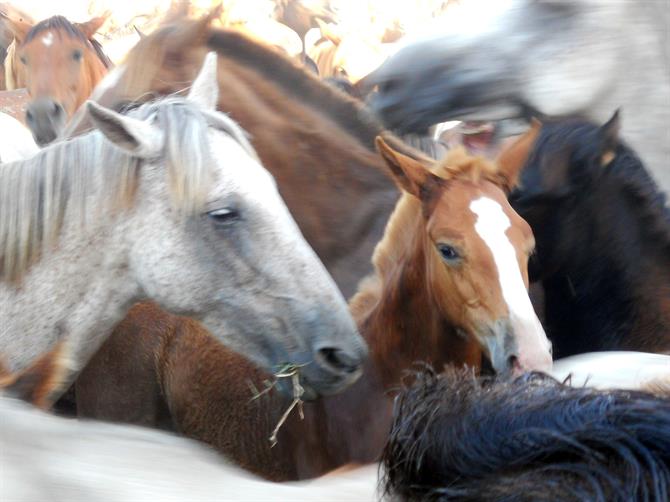
Today, Inmaculada is here for a very different event. Unlike the festive and religious nature of the Romeria, and the million or so people it attracts every year, the Saca de las Yeguas is solely about the horses and the people who work with them. It celebrates the essence of rural life in these parts.
A little past 10 o'clock, a voice comes over on the loudspeaker announcing that the horses are on their way. Local police quickly move people off to the sides and away from the main drag. In recent years, the herd is divided into smaller groups just before entering the village, as accidents can and do happen. Hundreds of wild horses driven at speed into a village full of noise and spectators can send even the most confident of horses into a panic.
Until only a few hours ago, these horses were completely wild, living devoid of any human contact in the marshes of the Doñana National Park. They belong to the Marismeña race, a local horse that is known for its strength and endurance.
The Doñana park is one of Spain’s most protected. Access permissions are hard to get and any people entering the park must be accompanied by an official guide. Guides that normally avoid areas where the horses graze. As such, many of the younger horses have never seen humans before.
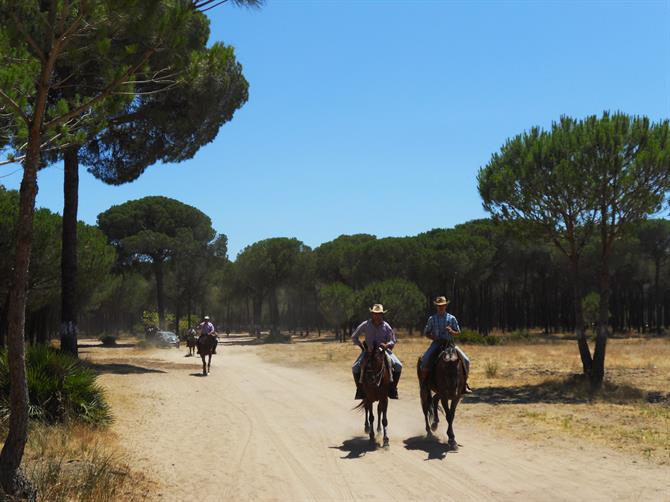
Things are different for the Yegüerizos. They spend days at a time locating the herds and organising their capture, following a ritual that is thousands of years old, one that knows no administrative regulations nor modern safety standards. They are guided purely by tradition and common sense. The first mention of the Saca de las Yeguas in an official document dates all the back to 1504, when the Duke of Medina Sidonia decided to regulate the practice, which was, even at that point, already centuries old.
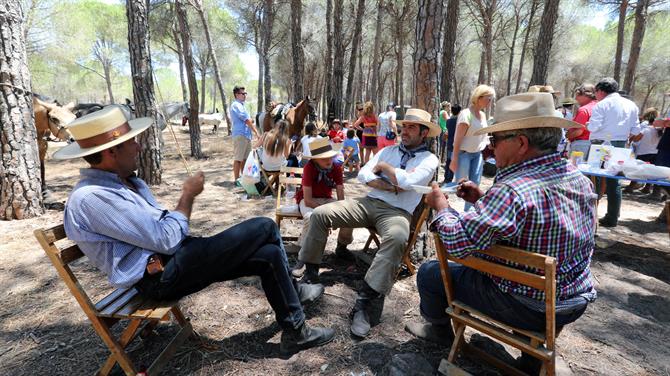
The inhabitants of these areas have always lived in close contact with horses. For instance, the streets of El Rocio are made up of sand to facilitate the passage of horses. The local houses and businesses are surrounded by beams that have been specially prepared for tethering animals. Wandering around the village is almost like being thrust onto the set of a Spaghetti Western.
Most of the residents, male and female, will at some point participate in the Saca de las Yeguas. Although there are no age restrictions, the Yegüeizos tend to be young men. The event is tough and physically demanding, particularly during the build-up and the collection of the horses from within the park. It’s hot and it’s hard work.
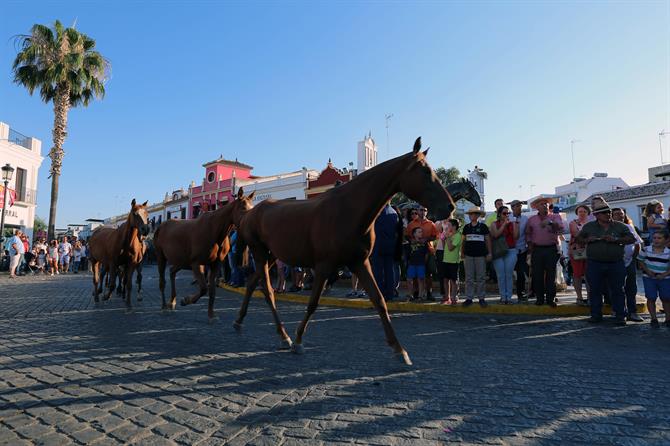
All of the horses herded from within the park are gathered in an area called La Boca del Lobo - the Wolf’s Mouth. They arrive exhausted and covered in dust.
Once all the animals have arrived, they are herded into a circle and left to calm down and gather strength. From here, the horses are moved past La Blanca Paloma ("the white dove"), the statue of the Virgin that dates from the twelfth century. All that separates them now from the village of Almonte are several kilometers of pine forest.
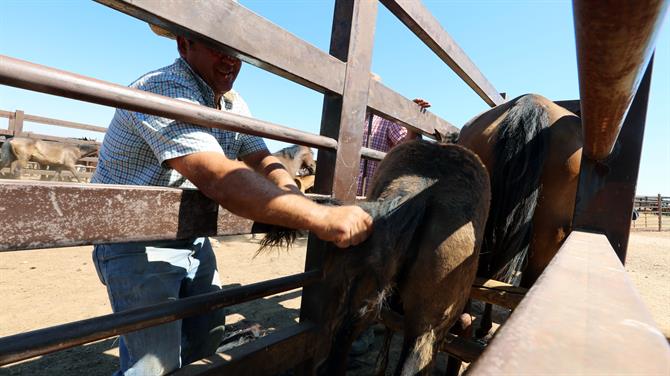
It’s in these pine forests that many local families await the Yegüerizos. They’ve usually been cooking and preparing food all morning. Traditional paellas cooked over open fires feature highly on the menus. The Yegüerizos stop off for some well deserved food and plenty of drinking. The whole community comes together to enjoy these breaks while the horses also have plenty opportunity to rest and get used to this new human contact.
Before you know it, groups of horses are beginning to gallop through the village. Everything flows quickly and without incident. It’s awe-inspiring to see the confidence with which the Yegüerizos move the horses. Everyone seems to know exactly what to do, despite the extreme tension and excitement.
The animals move closer together, as directed by the movements of the herd leaders. The foals are naturally the most disoriented, often running with crossed eyes when they come near the audience. It takes about an hour for the horses to make their way through Almonte. And suddenly… everything is over. The square is empty. The dust settles. Everyone starts moving off into the nearby bars, seeking shade and something to quench their thirst.
The horses end their journey in the Huerta de la Cañada, a public enclosure that’s located just outside of the village. It’s here where they’ll spend their first night in captivity.
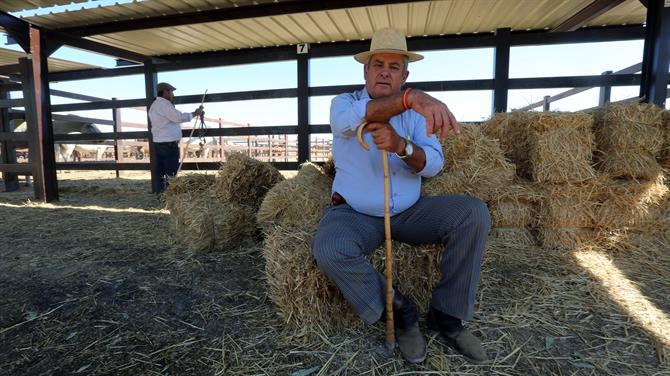
The roots of a tradition
The following day, the horses are divided up, all under the eyes of potential buyers, enthusiasts, and onlookers. They are all washed and vaccinated. The Yegüeizos cut their manes and tails, making them presentable for the horse fair.
Once in a while, at the request of a potential buyer, farmers separate the horses and bring one or more for closer inspection.
The recent economic crisis has meant fewer horses have been sold and their prices have dropped. Individual horses are now selling for between 600€ and 1500€. Regardless, the tradition lives on and will continue to do so.
As stated in the plaque that decorates the Monumento a los Yegüerizos de Almonte: "For he who has never won a horse in the swamp, does not know what it means to ride."
